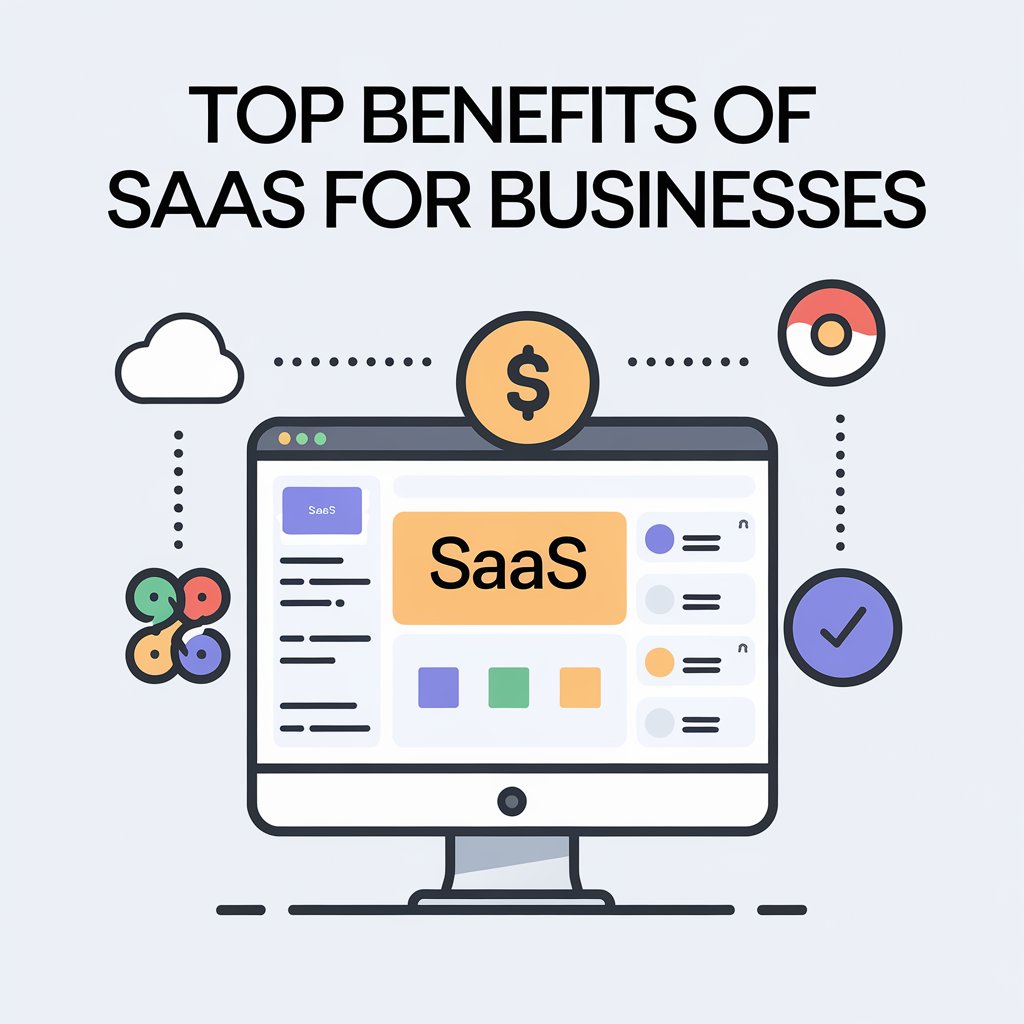Software as a Service (SaaS): A Comprehensive Guide
Software as a Service (SaaS)
The way businesses operate is changing, and at the heart of this transformation is Software as a Service (SaaS). SaaS is no longer just a tool; it’s a strategy, a way to stay competitive in an increasingly digital world. Whether you’re running a startup or managing an enterprise, understanding SaaS is essential for optimizing your operations and future-proofing your business.
In this guide, we’ll dive deep into what SaaS is, why it’s revolutionizing industries, and how you can leverage its potential for success. Whether you’re new to SaaS or looking to expand your knowledge, this article has you covered.
What is Software as a Service (SaaS)?
SaaS, or Software as a Service, is a cloud-based delivery model where software applications are hosted by a provider and accessed by users over the Internet. Unlike traditional software, which requires installation on local devices, SaaS solutions can be used directly through web browsers, eliminating the need for extensive IT infrastructure.
Key Features of SaaS:
- Cloud-Based Accessibility: Access from anywhere with an internet connection.
- Subscription Model: Pay-as-you-go pricing instead of upfront costs.
- Automatic Updates: Providers handle software updates, ensuring seamless functionality.
- Scalability: Businesses can easily scale up or down based on needs.
Why is SaaS Important for Businesses?
SaaS has revolutionized how businesses operate by providing cost-effective, flexible, and scalable software solutions. Here’s why it matters:
1. Cost Efficiency
SaaS eliminates the need for expensive hardware and reduces maintenance costs. Companies can subscribe to the software for a fraction of the cost required for on-premise solutions.
2. Accessibility and Mobility
With SaaS, employees can work remotely, accessing tools and data anytime, anywhere. This feature has proven invaluable in the era of remote work.
3. Seamless Updates and Maintenance
No more manually downloading updates or worrying about software compatibility—SaaS providers ensure your software is always up-to-date.
4. Enhanced Collaboration
SaaS applications often include collaboration tools that enable real-time team interactions, making workflows smoother and faster.
How Does SaaS Differ from Traditional Software?
Understanding the differences between SaaS and traditional software is critical to appreciating its advantages.
| Feature | SaaS | Traditional Software |
|---|---|---|
| Deployment | Cloud-based | On-premise |
| Payment Model | Subscription-based | One-time purchase |
| Accessibility | Accessible via internet | Requires local installation |
| Maintenance | Managed by provider | Managed by in-house teams |
| Scalability | Easily scalable | Limited scalability |
Top Benefits of SaaS for Businesses

1. Rapid Deployment
SaaS solutions can be set up and operational in a matter of hours or days, compared to the weeks or months required for traditional software.
2. Flexibility
Businesses can adjust their subscriptions based on evolving needs, scaling their usage up or down with minimal disruption.
3. Security and Compliance
Reputable SaaS providers prioritize data security and compliance with industry regulations, offering peace of mind to users.
4. Integration Capabilities
Many SaaS applications integrate seamlessly with other tools, creating a cohesive tech ecosystem for businesses.
Common Use Cases of SaaS
1. Customer Relationship Management (CRM)
Popular SaaS tools like Salesforce and HubSpot help businesses manage customer interactions and drive sales.
2. Enterprise Resource Planning (ERP)
SaaS ERP platforms like NetSuite streamline core business processes, from accounting to inventory management.
3. Human Resources Management (HRM)
HR software such as BambooHR or Workday enables efficient employee management, recruitment, and payroll processing.
4. E-commerce Platforms
Shopify and BigCommerce empower entrepreneurs to build and scale online stores with ease.
Emerging Trends in SaaS
The SaaS landscape is constantly evolving, and staying updated with trends is essential for businesses to remain competitive.
1. AI-Powered SaaS Solutions
Artificial intelligence is being integrated into SaaS platforms to enhance decision-making, automate repetitive tasks, and personalize user experiences.
2. Vertical SaaS
Unlike general-purpose SaaS, vertical SaaS focuses on specific industries like healthcare, retail, or finance, providing tailored solutions.
3. Low-Code/No-Code Platforms
These platforms empower users to create applications without deep coding knowledge, democratizing software development.
4. Enhanced Data Analytics
SaaS tools now offer advanced analytics capabilities, enabling businesses to derive actionable insights from their data.
5. Focus on Sustainability
Green SaaS is on the rise, with providers implementing eco-friendly practices in their data centers and operations.
Challenges of SaaS and How to Overcome Them
Despite its advantages, SaaS comes with challenges that businesses must address:
1. Data Security Concerns
Solution: Choose providers with robust security measures and compliance certifications.
2. Dependence on Internet Connectivity
Solution: Invest in reliable internet services and explore offline functionalities.
3. Subscription Fatigue
Solution: Regularly evaluate subscriptions to ensure ROI and avoid redundant tools.
How to Choose the Right SaaS Provider
Selecting the right SaaS provider is crucial for maximizing benefits. Consider these factors:
- Reputation: Look for reviews and case studies.
- Features and Scalability: Ensure the software aligns with your business needs.
- Pricing: Compare pricing models and hidden costs.
- Support and Training: Opt for providers that offer excellent customer support and training resources.
The Future of SaaS: What Lies Ahead?
The future of SaaS is bright, with innovations like AI, IoT integrations, and blockchain paving the way for transformative applications. As businesses continue to embrace digital transformation, SaaS will remain a cornerstone of success.
Conclusion
Software as a Service (SaaS) is more than just a buzzword—it’s a transformative approach to software delivery that empowers businesses with efficiency, scalability, and innovation. Whether you’re a startup or an enterprise, adopting SaaS solutions can give you the competitive edge you need in today’s fast-paced market.
FAQs
1. What is SaaS in simple terms?
SaaS is a cloud-based model where users can access software applications over the internet without needing to install them locally.
2. How does SaaS save costs for businesses?
SaaS eliminates the need for costly hardware, maintenance, and software updates, offering a subscription-based pricing model.
3. Is SaaS secure for businesses?
Yes, reputable SaaS providers implement robust security measures and comply with industry regulations to protect user data.
4. Can small businesses benefit from SaaS?
Absolutely! SaaS solutions are scalable and affordable, making them ideal for businesses of all sizes.
5. What are some popular examples of SaaS?
Notable examples include Google Workspace, Dropbox, Salesforce, and Shopify.



